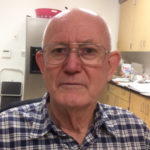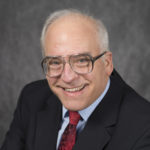October 9, 2020
Who doesn’t love things that glow? Around this time every year, we get a lot of questions about how to make various objects glow in the dark. Which products will glow longest? Which are best for mixing with liquids? How do they work? Fear not! The answers are here.
Read the rest of this entry »
 Leave a Comment » |
Leave a Comment » |  About Us, Chemistry, College level, Elementary level, High School level, Middle School level | Tagged: chemiluminescence, Chemistry, glowing, light, luminescence |
About Us, Chemistry, College level, Elementary level, High School level, Middle School level | Tagged: chemiluminescence, Chemistry, glowing, light, luminescence |  Permalink
Permalink
 Posted by Donna Giachetti
Posted by Donna Giachetti
April 5, 2019
 By Marty Mathiesen
By Marty Mathiesen
During the electricity unit in my high school physics class, I like to do an activity in which students determine the effect of having batteries placed in a series circuit and also in a parallel circuit. We explore questions such as What are the similarities? The differences? What are the advantages of each method? Do you see any patterns?
 Leave a Comment » |
Leave a Comment » |  College level, electricity, Elementary level, experiments, High School level, Middle School level | Tagged: DIY, Educational Innovations, electricity, energy, experiments, green energy, hands-on science, light, parent friendly, phenomenon based learning, phenomenon-based science, science, variables |
College level, electricity, Elementary level, experiments, High School level, Middle School level | Tagged: DIY, Educational Innovations, electricity, energy, experiments, green energy, hands-on science, light, parent friendly, phenomenon based learning, phenomenon-based science, science, variables |  Permalink
Permalink
 Posted by Donna Giachetti
Posted by Donna Giachetti
September 19, 2018

STEM education (Science, Technology, Engineering and Mathematics) is a curriculum driven by problem solving, exploration, and discovery while incorporating technology and engineering into the teaching of science and mathematics.
Educational Innovations carries a number of products like astronomy and space science tools that fit perfectly into the STEM classroom. These materials promote exploratory learning, and require students to actively engage themselves to discover the solution to the situation or problem at hand.
If you have a favorite STEM experiment or product, please let us know in the comments section below!
Read the rest of this entry »
 1 Comment |
1 Comment |  Elementary level, High School level, Middle School level, STEM | Tagged: awesome science experiment, DIY, Educational Innovations, electricity, energy, experiments, force and motion, fun experiments, hands-on activity, hands-on science, homeschool, kinetic energy, light, newton, Newton's First Law, Newton's Second Law, Newton's Third Law, parent friendly, phenomenon based learning, phenomenon-based science, Physics, physics demonstration apparatus, science, STEM |
Elementary level, High School level, Middle School level, STEM | Tagged: awesome science experiment, DIY, Educational Innovations, electricity, energy, experiments, force and motion, fun experiments, hands-on activity, hands-on science, homeschool, kinetic energy, light, newton, Newton's First Law, Newton's Second Law, Newton's Third Law, parent friendly, phenomenon based learning, phenomenon-based science, Physics, physics demonstration apparatus, science, STEM |  Permalink
Permalink
 Posted by Donna Giachetti
Posted by Donna Giachetti
April 13, 2018
 By Cathy Byrne
By Cathy Byrne
Virtually all fourth grade students explore electricity and magnetism. As part of this unit, students are asked to do two things:
1 – Make observations to provide evidence that energy can be transferred from place to place by sound, light, heat, and electric currents (4-PS3-2)
2 – Apply scientific ideas to design, test, and refine a device that converts energy from one form to another (4-PS3-4).
This year, the teachers at my school put a new twist on our electricity and magnetism unit… and the results were amazing!
 Leave a Comment » |
Leave a Comment » |  electricity, Elementary level, experiments, magnetism, Middle School level, STEM | Tagged: DIY, Educational Innovations, electrical circuits, electricity, energy, experiments, fun experiments, hands-on activity, homeschool, light, magnetism, parent friendly, PBL, PhBL, PhenoBL, phenomenon based learning, science, science fair project, STEM, variables |
electricity, Elementary level, experiments, magnetism, Middle School level, STEM | Tagged: DIY, Educational Innovations, electrical circuits, electricity, energy, experiments, fun experiments, hands-on activity, homeschool, light, magnetism, parent friendly, PBL, PhBL, PhenoBL, phenomenon based learning, science, science fair project, STEM, variables |  Permalink
Permalink
 Posted by Donna Giachetti
Posted by Donna Giachetti
March 2, 2018
 by Alex Scheeline
by Alex Scheeline
The Smithsonian Institution’s National Museum of American History, on the national mall in Washington, D.C., has an especially fascinating exhibit on Thomas Edison. The exhibit highlights the development of electricity and lighting, and, more generally, invention. In late 2017, I visited an area that featured a set of lamps—including a low-pressure sodium vapor lamp, a mercury lamp, an incandescent lamp, and a compact fluorescent lamp.
Read the rest of this entry »
 1 Comment |
1 Comment |  College level, experiments, High School level, Middle School level, Physics, science fair, STEM | Tagged: color, diffraction, DIY, experiments, hands-on science, light, phenomenon based learning, phenomenon-based science, physics demonstration apparatus, science, science fair project, spectra, spectrascope, STEM, ultraviolet |
College level, experiments, High School level, Middle School level, Physics, science fair, STEM | Tagged: color, diffraction, DIY, experiments, hands-on science, light, phenomenon based learning, phenomenon-based science, physics demonstration apparatus, science, science fair project, spectra, spectrascope, STEM, ultraviolet |  Permalink
Permalink
 Posted by Donna Giachetti
Posted by Donna Giachetti




 Posted by Donna Giachetti
Posted by Donna Giachetti  By Marty Mathiesen
By Marty Mathiesen
 By Cathy Byrne
By Cathy Byrne by Alex Scheeline
by Alex Scheeline